Between soulful lyricism and notes of optimism, artists and choreographers unleashed shreds of panache, fierce beauty and feel-good compositions, in response to the bleak climate of our present times.
VENICE, ITALY — It’s a difficult time to tell stories about the arts. Dance, drama, and theatre remain powerful tools in this ongoing struggle, and as the world continues to grapple with structural crises and politically driven downturns, acknowledging the precarious state of the creative industries—particularly the scarcity of funding and institutional support—has finally become a socially acceptable conversation. That feels like progress. But calling it a true accomplishment, as many legislative bodies tend to do, seems like a stretch.
If that sounds ungrateful, good. Because it’s taken countless sacrifices for creatives to make it this far in an industry—culture, and entertainment that glorifies progress and meritocracy, often at the expense of individual dreams. This is one of many conversations I’ve had over the past year, and their outcomes are laid bare for all to see.
Still, I don’t want to sound overly pessimistic. Institutions like La Biennale di Venezia’s International Festival of Contemporary Dance offer days filled with experimental performances, bringing together creative minds from around the world—a sign of positive change coming to the surface.
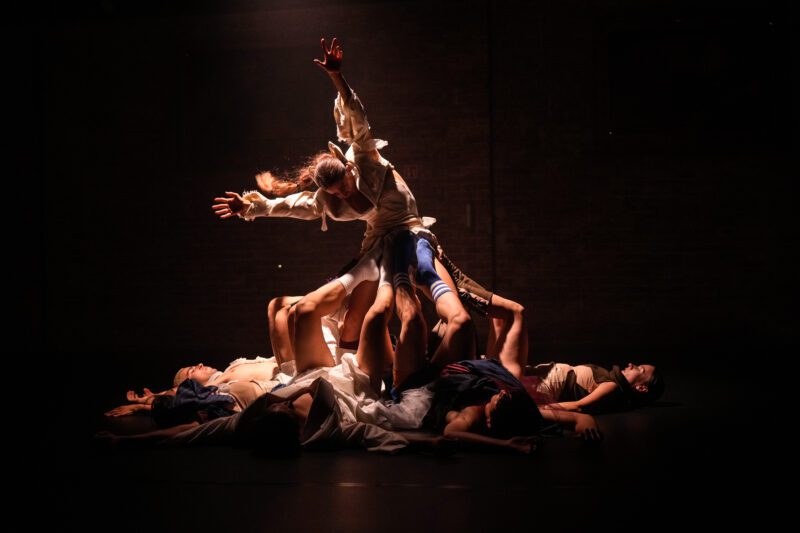
Biennale College – Tamara Fernando and Matthew Totaro. Photograph: Andrea Avezzù

Biennale College – Tamara Fernando and Matthew Totaro. Photograph: Andrea Avezzù
The 19th edition of the festival, which ran from 17 July to 2 August 2025, featured a blend of soloists, world-renowned companies, and Biennale College workshops, all of whom contributed to this year’s program. Titled ‘Myth Makers’, the theme leaned into the abstract narratives of mythology and the sensibilities that come with it—from climate change to digital transformation. The body and its gestures transcended the act of dance, pushing storytelling into deeper realms of meaning.
“Through their puzzling creative pursuit, artists have always been the myth makers of their time, and it is through their legacy that we delve into the depths of their inner selves, articulating universal truths that resonate across time and cultures,” said Wayne McGregor, Artistic Director of the Dance Biennale. McGregor, who assumed the role in 2021, has been reappointed for another two years.
“Artists are also the creators of the myths of our time. Through their creativity, they craft ancient, hypothetical, and contemporary narratives—marking, shaping, writing, and acting to enchant, captivate, and endure.” He went on to highlight the urgent need for myths that speak to today’s human experience, especially in an age defined by rapid technological change and global challenges like climate change and social inequality.
Since its inception in 1999, the Biennale’s dance exhibition has continuously challenged the status quo, programming unconventional narratives while aligning with each director’s evolving vision. “These new narratives can foster a sense of connection, belonging, and purpose—guiding individuals and communities through difficult times.”
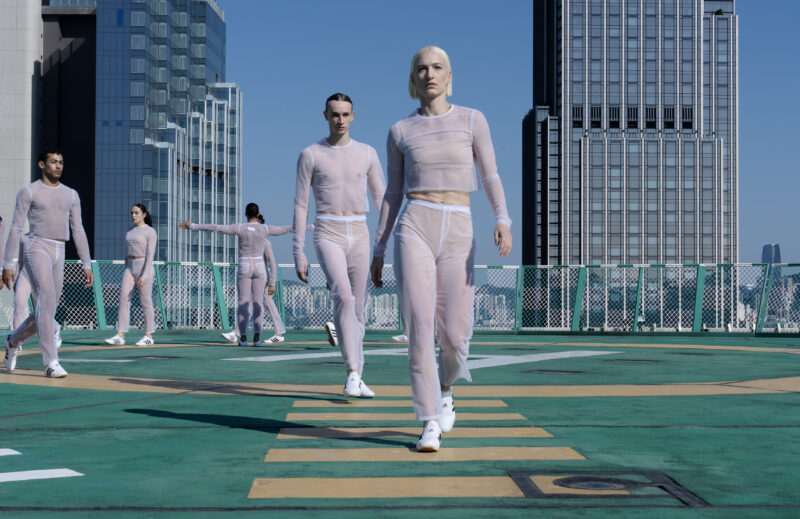
Wayne McGregor ON THE OTHER EARTH 2025. Photograph: Ravi Deepres
As part of this year’s edition, McGregor premiered Wayne McGregor: On The Other Earth, the world’s first post-cinematic choreographic installation. This groundbreaking work reimagines dance performance as a fully immersive, sensorial experience.
Set within Jeffrey Shaw and Sarah Kenderdine’s towering architectural structure—eight meters wide and four meters tall—and projected onto a 26-million-pixel, three-dimensional screen, the piece combines choreography, digital imaging, and artificial intelligence.
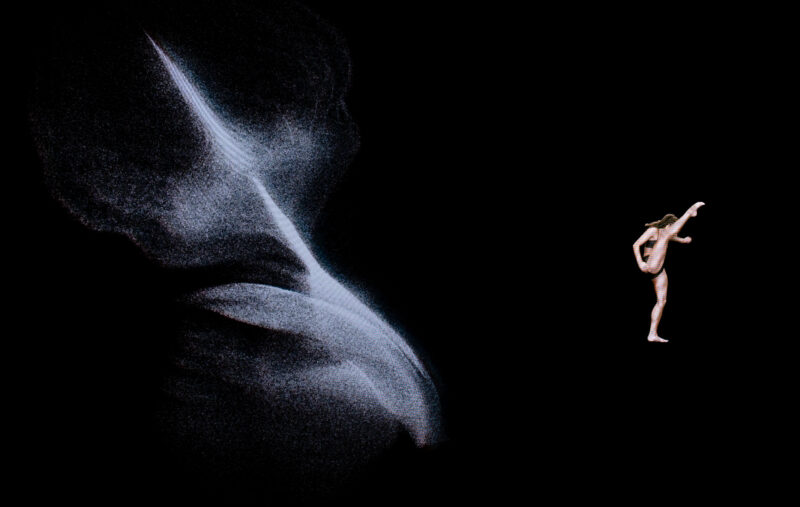
Wayne McGregor ON THE OTHER EARTH 2025. Photograph: Ravi Deepres
Created with artists Ravi Deepres and Theresa Baumgartner, the work challenges our notions of movement, the body, and performance itself. That same spirit of progressive and inclusive creativity echoed throughout the festival, as choreographers explored varied viewpoints within broader global narratives. Juggling threads of invention, expression, and intention is no small feat.
German-born, Tuscany-based choreographer Philippe Kratz, Artistic Director of Nuovo Balletto di Toscana, collaborated with Italian-Spanish choreographer Pablo Girolami to premiere a diptych grounded in myth. Titled Sisifo Felice (Happy Sisyphus, referencing the mythological figure condemned to endlessly push a boulder uphill), the piece employed graphic virtuosity, power dynamics, and gestural repetition to evoke the experience of struggle.

Kratz and Girolami. Photograph: Andrea Avezzù
Kratz—whose company narrowly avoided shutting down earlier this year—met the uncertainty of the arts sector head-on, delivering a performance that felt both timeless and balanced. Dancers moved through sinuous patterns and bursts of chaotic freedom, capturing the emotional texture of resilience.
“It’s difficult to dance in Italy,” Kratz admitted. “It’s a lot harder than doing it in France, Germany, or Britain. Out of everything happening in Italy, I really believe La Biennale is the most international festival.”
“It’s challenging in one sense, because we’re one of the few companies that actually brought a new premiere to Venice. Most other works had already debuted elsewhere.” For Kratz, the myth of Sisyphus—especially as revisited by Albert Camus—reflects our present-day anxieties.
“I think the hardest task today is staying hopeful. We’re so informed, and often misinformed, with so much happening at once. Resilience, for me, carries a kind of dignity—it connects us, gives us strength, and helps us endure.”
Amid an unsettling score and fragmented choreography, the dancers moved with raw strength, alternating between careful pacing and occasional breakdowns in cohesion. The staging was sparse, but the themes were vast: solitude, hardship, and the pursuit of light in the darkest of times.
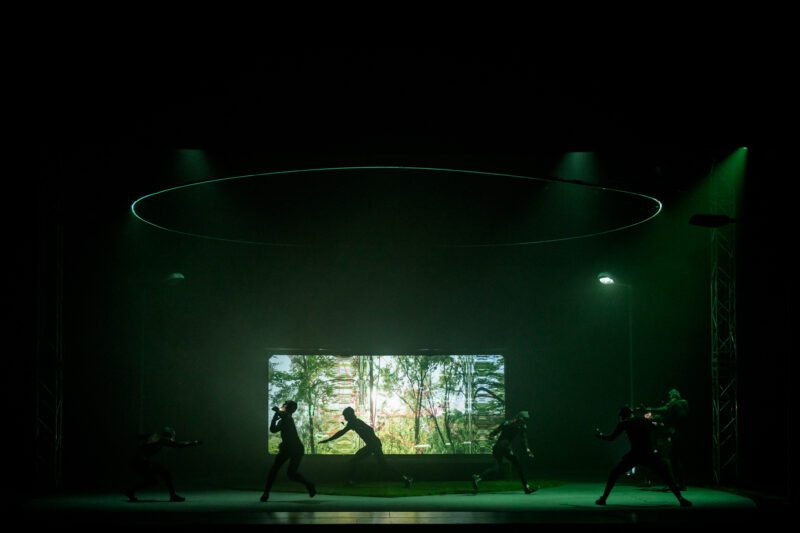
Kor’sia. Photograph: Andrea Avezzù
As some dance companies become sleeker and more polished, Kor’sia’s Antonio de Rosa and Mattia Russo remain refreshingly untamed. Their piece, Simulacro, explored the body as both expressive vessel and moving facade—caught between the real and the virtual. Using a blend of artistic languages and advanced technologies, their performance created a disorienting yet immersive bilateral experience that underscored the increasingly porous boundary between reality and virtuality.
But how deeply can one truly connect with their body and soul?

Tânia Carvalho. Photograph: Andrea Avezzù
Portuguese choreographer Tânia Carvalho offered a visceral answer. Presenting Ventre do Vulcão (Womb of the Volcano), she explored surrender—allowing movement to emerge beyond conscious control. Her choreography fused anguish, awe, and absurdity, where forms melted into one another or tangled in irony.
“It was interesting to see how this year’s Biennale brought together such diverse choreographic voices, all under a curatorial vision that felt open and multifaceted,” she told GLASS. “This was the first time I truly engaged with it. I premiered a solo called Ventre do Vulcão, which moves through emotional intensity and vulnerability, embracing both shadow and light—everything we carry within.”

Tânia Carvalho. Photograph: Andrea Avezzù
Despite it being a world premiere, Carvalho felt complete freedom in the creative process.
“There was no pressure to conform. I felt a genuine trust in my vision, and that openness allowed me to fully explore the work. For me, freedom is essential in art—festivals should be eclectic spaces where different visions coexist.”
Carvalho’s work is deeply intuitive. “I rarely start with fixed meanings. I begin with sensations or images that feel urgent or alive. Later, I discover layers I hadn’t planned—almost like the work reveals something about myself and the world I inhabit. It’s a way of listening, as much as it is a way of expressing.”
Elsewhere, the Biennale College premiered an equally explosive and emotionally raw piece by multidisciplinary artists Matthew Totaro and Tamara Fernando. Their choreography explored identity, levity, and distortion—using the body as a weapon of liberation. It mirrored nature’s unpredictable patterns, clashing physical freedom against the weight of bodily consistency. “Showing off doesn’t mean giving consent, and exposure doesn’t justify assumption,” they noted.
“We live between two worlds: one fluid and boundless, the other fragile and deeply constrained. In that middle space, we must relearn what it means to accept without judgment.” Their piece charted a surreal evolution—from illusion to tangible reality. “We told the dancers to start as creatures—because we are creatures, like Frankenstein at the beginning.”
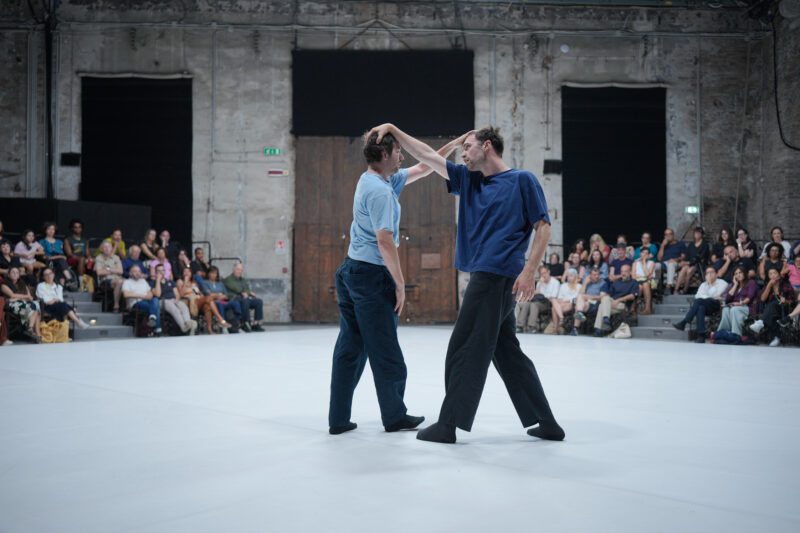
William Forsythe. Photograph: Andrea Avezzù
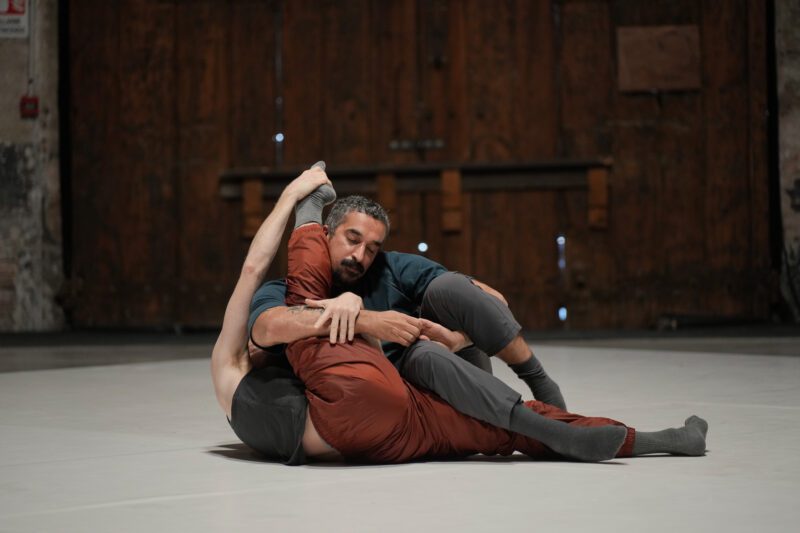
William Forsythe. Photograph: Andrea Avezzù
A celebration of identity also pulsed through William Forsythe’s performance Friends of Forsythe, where dancers swayed like the tides of Venice’s lagoon—unburdened, playful, and raw. Characters in Forsythe’s world parody themselves, escaping reality through a soulful, self-invented language.
Looping gestures, awkward angles, and structured improvisation dominate, culminating in a controlled, poised flow rooted in classical line and balance. By the end, the energy soared—bodies twisting and curving, always returning to a centre of gravity.
All in all, the festival was weirdly satisfying: a celebration of resilience, mythology, and the stubborn brilliance of dance in all its unruly forms.
by Chidozie Obasi
